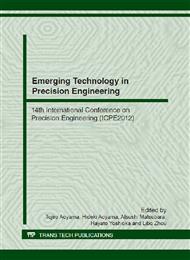p.615
p.621
p.627
p.633
p.639
p.645
p.650
p.656
p.662
Motion Artifact Compensation for Wristwatch Type Photoplethysmography Sensor
Abstract:
Heart beat measurement is useful not just for medical use but also for daily healthcare monitoring and for sports. Photoplethysmography is an optical pulse measurement method that measures the variation of light absorption of the blood flow in capillary. Fingertip and earlobe, which are suitable places for this method, are not suitable for wearing sensors in daily life. Measurement at wrist will be more favorable. Technical difficulties of applying photoplethysmography measurement on wrist are: a) blood flow variation and change of sensor orientation caused by body motions, and b) low sensitivity compared to measurement at fingertips or earlobes because of the low capillary density in the tissue. We derived a transfer function that expresses the relationship between body acceleration and change in capillary blood flow based on a simple fluid dynamics model of artery and capillary. Preliminary experiments have shown that motion the artifacts can be reduced by subtracting the change of blood flow estimated from body acceleration. This method is different from conventional frequency filtering methods that do not consider the relationship between the body motion and the changes in the capillary blood flow. Furthermore, sensor head suspension mechanism has been employed in order to stabilize the sensor orientation with respect to the skin as well as the applied force on the skin.
Info:
Periodical:
Pages:
639-644
Citation:
Online since:
November 2012
Authors:
Price:
Сopyright:
© 2012 Trans Tech Publications Ltd. All Rights Reserved
Share:
Citation:


